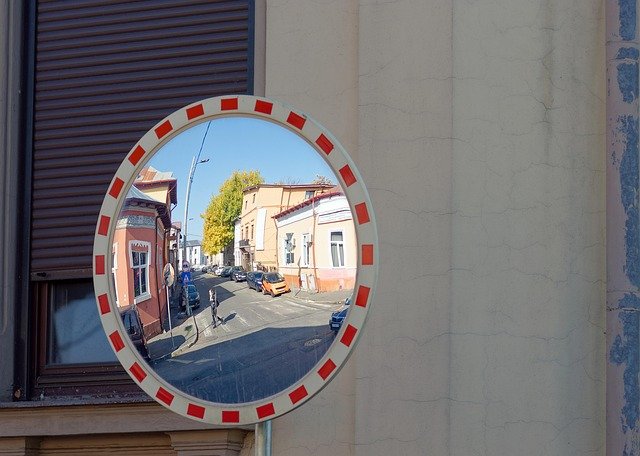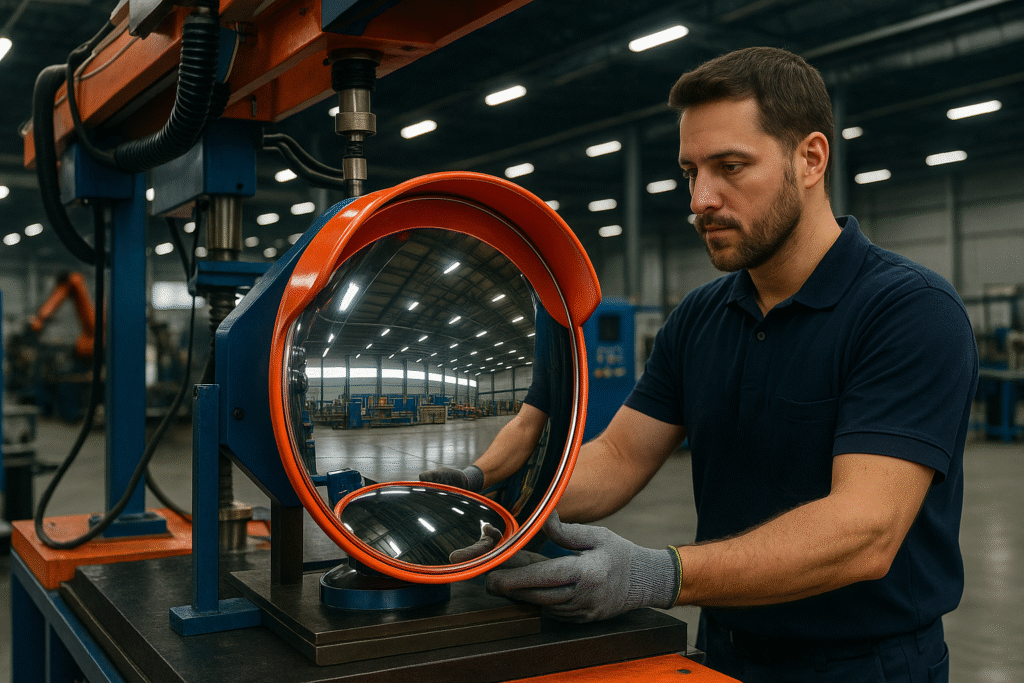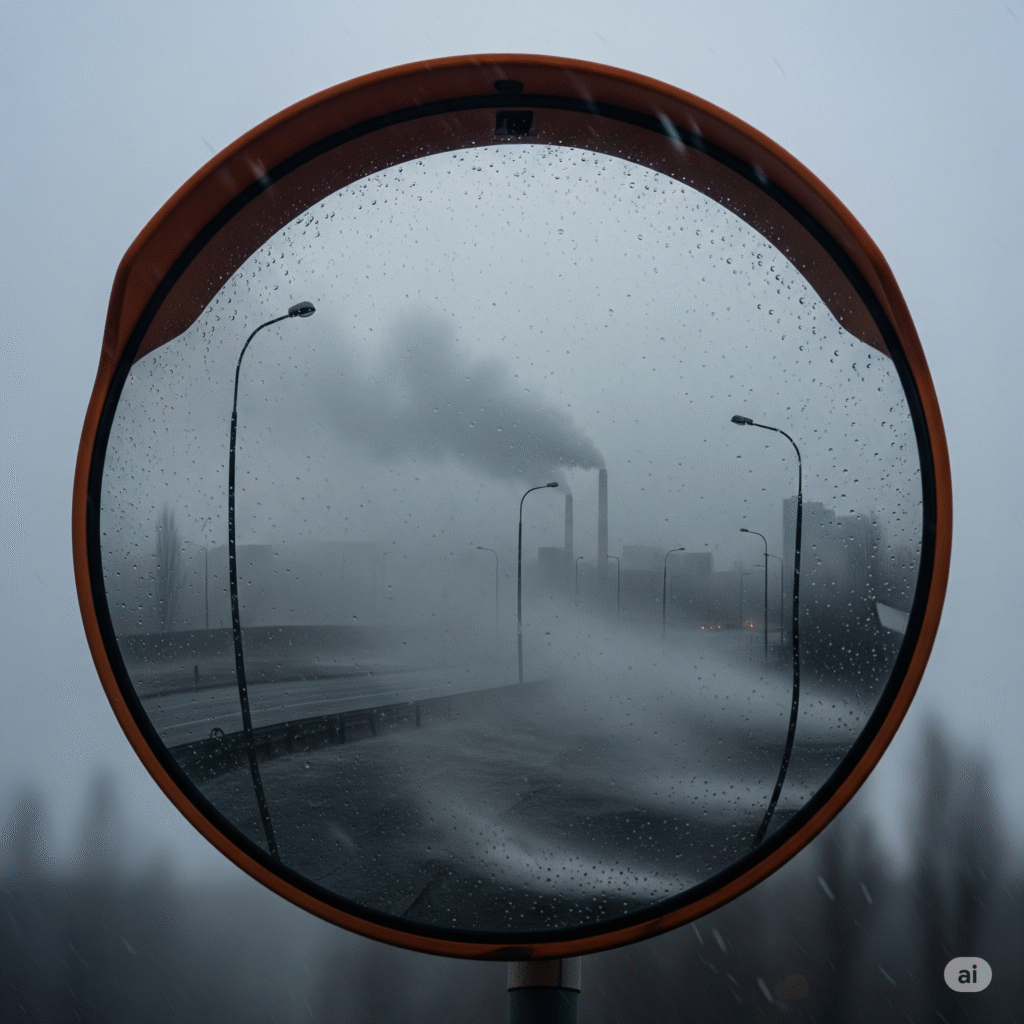With the rising global demand for road safety equipment, traffic safety mirrors—also known as convex mirrors or wide-angle surveillance mirrors—have become indispensable in both public infrastructure and private property management. Whether used in urban intersections, warehouse corners, parking facilities, or gated driveways, these mirrors help minimize blind spots and prevent collisions.
For importers, distributors, and B2B buyers looking to source traffic mirrors from global manufacturers, product standards are not just a regulatory necessity—they are a business-critical consideration. Sourcing non-compliant or inferior safety mirrors can lead to reduced performance, safety hazards, and regulatory fines, ultimately impacting your reputation and bottom line.
This article explores the most important international standards, certifications, materials, and quality benchmarks B2B buyers should evaluate when importing convex traffic mirrors.
Understanding the Role of Traffic Safety Standards
Traffic mirrors are categorized as passive safety equipment, meaning they do not require a power source but directly enhance driver awareness and visibility. Given their role in reducing traffic incidents, their quality and performance are often regulated by transportation authorities and industrial safety organizations in various countries.
When importing traffic mirrors, you must ensure they meet the safety, visibility, durability, and installation criteria of the destination market. This reduces liability, ensures user safety, and guarantees your product offering is market-ready.

Key International Standards for Convex Traffic Mirrors
- EN 166:2002 / EN 166:2001 (European Optical Standards)
This standard, originally designed for personal eye protection, is often used to evaluate the optical clarity and lens quality of convex traffic mirrors in the European market.
Key considerations:
- Minimal distortion across the curved reflective surface
- Resistance to optical fatigue
- Accurate curvature for wide-angle viewing
If you’re importing for the EU, your supplier should be able to provide compliance documentation indicating adherence to EN optical standards.
- CE Certification (EU Market)
Though traffic mirrors are considered passive devices, CE marking may still be required if they are bundled with hardware or support structures that fall under construction product directives or road equipment categories.
CE marking implies compliance with:
- General Product Safety Directive
- Low Voltage Directive (in case of integrated lighting)
- Construction Product Regulation (CPR)
- AS/NZS 476 (Australia & New Zealand)
This standard defines specifications for road traffic control devices. While AS/NZS 476 is broad, its references to durability, reflectivity, and mounting hardware apply to convex traffic mirrors used at intersections or driveways.
- MUTCD Compliance (United States)
In the U.S., the Manual on Uniform Traffic Control Devices (MUTCD) outlines guidelines for all road safety equipment. While it does not directly standardize convex mirrors, states or municipalities may reference MUTCD compliance as a benchmark for placement and application.
Ensure that the mirror model you import aligns with local Department of Transportation (DOT) requirements in your target U.S. market.
- ISO 9001 and ISO 14001 (Quality & Environmental Management)
Manufacturers with ISO 9001 certification demonstrate consistent product quality management. ISO 14001 certification ensures environmentally responsible manufacturing.
For B2B importers, sourcing from ISO-certified manufacturers adds credibility and aligns with sustainability initiatives common in government and enterprise procurement contracts.
- Impact Resistance Testing
Traffic mirrors, especially those used in outdoor settings or near loading zones, must withstand occasional impacts from debris, equipment, or vandalism.
Standards to look for:
- ANSI Z97.1 (Safety glazing material standard in the U.S.)
- EN 12600 (Impact resistance for glass and safety glazing materials)
- Drop-ball tests for polycarbonate/acrylic lenses
Ask your supplier for drop-impact test certifications to ensure the product won’t shatter or become hazardous on impact.
Material Specifications and Compliance Indicators
When importing convex traffic mirrors, the choice of mirror lens material and housing also plays a major role in product compliance and longevity. Below are material benchmarks aligned with global expectations.
a) Mirror Lens Materials
- Polycarbonate: Shatterproof, high impact resistance, UV-protected. Ideal for outdoor and high-traffic locations.
- Acrylic: Lightweight, high clarity, affordable. Suitable for indoor or light-duty outdoor use.
- Stainless Steel: Vandal-resistant, durable, reflective. Used in prisons, warehouses, and high-security areas.
Material compliance tip: Confirm that all materials are RoHS (Restriction of Hazardous Substances) compliant, especially for exports to the EU.
b) Frame and Housing Materials
- ABS Plastic: UV-stabilized, weather-resistant, commonly used for outdoor units
- PVC or Polypropylene: Used for light-duty applications
- Aluminum or Galvanized Steel: Adds strength for industrial-grade mirror units
Ensure that mounting arms and bolts are zinc-coated or stainless steel to resist rust, especially in coastal or humid regions.

Key Safety and Performance Features to Verify Before Import
Beyond certifications, importers should verify these essential performance features to ensure product readiness and client satisfaction:
- Field of View and Viewing Distance
The mirror should clearly specify its optimal viewing distance range, e.g., 5–20 meters for 60 cm mirror. Import only mirrors that have been tested for angle curvature consistency and distortion-free reflections.
- UV and Weather Resistance
For outdoor use, mirrors must be UV-stabilized to prevent discoloration, warping, or hazing. Manufacturers should offer UV resistance data, often measured in hours under artificial or natural light exposure.
- Mounting Hardware Compatibility
Ensure the brackets and clamps are suitable for your intended pole sizes (e.g., 48 mm, 60 mm, 76 mm). Adjustable swivel brackets are standard, but not all suppliers provide them by default.
- Temperature Tolerance
For use in cold or hot climates, ensure the mirror can perform within a temperature range of at least −20°C to +60°C.
- Packaging and Transit Protection
Mirror lenses are susceptible to scratching and warping during shipping. Request protective film on lenses, foam-layer packaging, and shock-absorbing corner protectors to prevent in-transit damage.

Working with Reliable Suppliers: Questions to Ask
As an importer, your partnership with the manufacturer directly influences your ability to scale and meet regulatory expectations. Ask the following:
- Can you provide full certification documentation (ISO, CE, EN standards)?
- Do you offer drop test and impact resistance results?
- Is the mirror lens UV-stabilized and weatherproof?
- Do you offer OEM or white-label options for B2B resale?
- How are the mirrors packaged for sea or air freight?
Requesting samples and conducting third-party quality inspections is advisable before placing large or recurring orders.
Conclusion
Importing traffic safety mirrors for resale or project deployment requires more than just finding the lowest price per unit. It demands due diligence in product quality, material compliance, certification alignment, and supplier reliability. By sourcing traffic and convex mirrors that meet globally recognized safety and performance standards, B2B buyers can offer end-users dependable, long-lasting safety solutions that meet legal, technical, and operational requirements.
Whether you’re targeting road construction contractors, warehouse integrators, or municipal tenders, meeting these standards ensures your offering not only meets demand but also earns long-term trust and repeat business.
Looking for a custom convex mirror manufacturer or supplier? Struggling to find the right factory to bring your vision to life? We’ve got you covered! At our place, we craft top-quality convex mirrors with precision and care. Big or small, your needs are our mission. Let’s launch your mirror project and take your product line to the next level! Click here to contact
